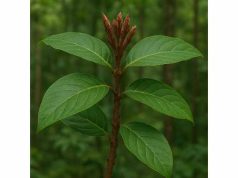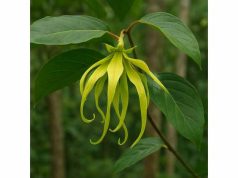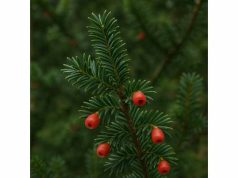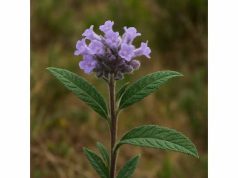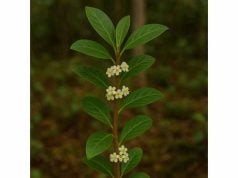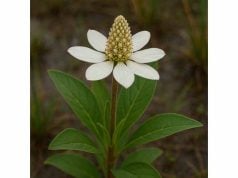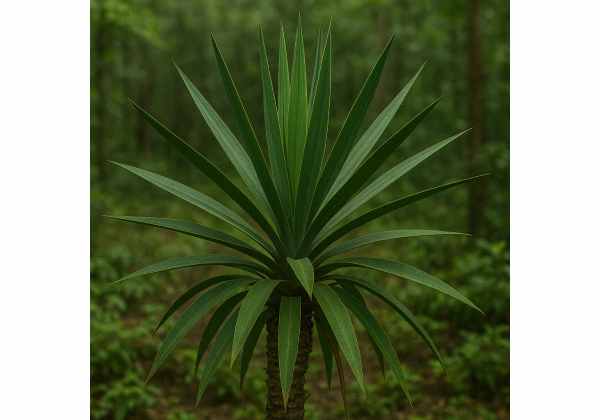
Yucca (genus Yucca) is a hardy perennial plant indigenous to the deserts and plains of North and Central America. Renowned for its robust roots and fibrous leaves, yucca contains steroidal saponins, flavonoids, and polyphenols that exhibit powerful anti-inflammatory, antioxidant, and pain-relieving effects. Traditionally used by indigenous cultures to support joint health, digestive balance, skin wellness, and immune function, research continues to uncover its potential in arthritis relief and metabolic support. From soothing topical applications to nourishing teas and supplements, yucca offers a broad spectrum of medicinal uses that blend time-honored wisdom with contemporary wellness practices. Its gentle cleansing properties also make it popular in natural shampoos and skincare remedies.
Table of Contents
- Botanical Overview and Species Identification
- Phytochemical Composition and Key Constituents
- Health Advantages and Fundamental Qualities
- Usage Methods and Safety Guidelines
- Research Insights and Noteworthy Findings
- Frequently Asked Questions
Botanical Overview and Species Identification
Yucca belongs to the Asparagaceae family and includes over 40 species, such as Yucca filamentosa and Yucca schidigera. Native to arid and semi-arid regions, these evergreen perennials form striking rosettes of sword-shaped leaves that can reach up to 2 meters in length. The stiff, lanceolate leaves arise from a central stem or trunk, giving mature specimens an architectural, almost sculptural appearance in the landscape.
In spring or early summer, yucca sends up a tall flower stalk bearing clusters of bell-shaped, creamy-white blossoms. These fragrant flowers are pollinated by the yucca moth (Tegeticula yuccasella), which has a unique mutualistic relationship: the moth lays eggs in the ovary and, in turn, carries pollen between flowers. After pollination, woody seed pods develop, containing numerous black seeds that can be harvested and propagated.
Yucca thrives in well-drained, sandy or gravelly soils with full sun exposure. It tolerates drought exceptionally well due to its deep taproot system, which stores water and nutrients. Young plants appreciate light afternoon shade, while mature plants withstand temperature extremes from −15 °C to 45 °C. In its native habitat, yucca often forms clonal colonies through underground rhizomes, creating dense stands that stabilize soil and prevent erosion.
Gardeners and conservationists value yucca’s low-maintenance nature and its ecological role: its roots support soil health, its flowers feed bees and moths, and its foliage offers shelter for small wildlife. Species identification hinges on leaf margin characteristics (smooth or filamentous edges), flower arrangement (single stalk or branched panicles), and stem presence (trunk-forming or acaulescent). Whether admired in xeriscapes or wildlands, yucca’s distinctive form and resilience make it a botanical icon of dry landscapes.
Phytochemical Composition and Key Constituents
Yucca’s therapeutic potential is anchored in its rich phytochemical array. The most studied compounds reside in the roots and rhizomes, where concentrations of saponins and associated molecules can reach up to 10% of dry weight. Below are the primary constituents that drive its medicinal properties:
- Sarsasapogenin & Yuccagenin
These steroidal sapogenins form the aglycone core of yucca’s saponins. They exhibit anti-inflammatory and immune-modulating activities by inhibiting pro-inflammatory cytokines and stabilizing cell membranes. - Saponins
Glycosides such as yuccosaponin I and II foam when shaken in water and demonstrate surfactant properties. Medicinally, they aid in bile secretion, support digestive fat emulsification, and may bind cholesterol in the gut. - Polyphenols
Compounds like chlorogenic acid and caffeic acid provide antioxidant defense by neutralizing free radicals, protecting cells from oxidative stress linked to aging and chronic diseases. - Flavonoids
Quercetin, kaempferol, and isorhamnetin contribute anti-inflammatory, vasoprotective, and antihistamine effects. They help maintain capillary integrity and reduce allergic responses. - Alkaloids
Trace amounts of smilagenin and holothurin exhibit mild analgesic and muscle-relaxing actions, supporting joint comfort and muscular relaxation in topical applications. - Resinous Compounds
Lipophilic constituents, including long-chain fatty acids and sterols, provide emollient and protective benefits in skincare formulations.
Together, these phytochemicals create a synergistic matrix in which anti-inflammatory saponins work alongside antioxidants and flavonoids to deliver multi-targeted support. Extraction techniques—from simple decoctions to supercritical CO₂—affect the profile and potency, so choose preparations standardized for saponin content (often 5–10%) to ensure consistent therapeutic strength.
Health Advantages and Fundamental Qualities
Yucca’s diverse chemical portfolio translates into a wide range of health benefits. Let’s explore its core advantages and understand how they enhance well-being.
- Joint Comfort & Mobility: Saponins and sapogenins inhibit inflammatory mediators like TNF-α and interleukins, providing relief from arthritis discomfort and supporting flexible joints.
- Digestive Balance: Bile-stimulating saponins aid fat digestion, while mucilaginous polysaccharides soothe gastrointestinal lining, easing indigestion and promoting nutrient absorption.
- Antioxidant Protection: Polyphenols and flavonoids scavenge free radicals, reducing oxidative damage to cells and helping maintain youthful skin and cellular health.
- Skin & Scalp Wellness: Resins and saponins act as natural cleansers and conditioners, improving scalp health, reducing dandruff, and enhancing skin softness when used in topical washes.
- Immune Support: Bioactive compounds modulate immune responses, helping the body defend against pathogens while avoiding excessive inflammation.
- Cholesterol & Blood Lipid Regulation: Saponins may bind dietary cholesterol, reducing absorption and supporting healthy blood lipid profiles over time.
Imagine yucca’s root components as a supportive team: saponins emulsify fats in the gut, antioxidants shield cells from stress, and flavonoids soothe both skin and internal tissues. This holistic synergy underlies yucca’s reputation as a versatile botanical ally.
Usage Methods and Safety Guidelines
Proper use of yucca maximizes benefits and minimizes risks. Below are practical methods and essential precautions for both internal and topical applications.
Internal Preparations
- Decoction (Tea): Simmer 1–2 teaspoons of dried root in 300 ml water for 10–15 minutes. Strain and drink up to three times daily to support digestion and joint comfort.
- Capsules & Tinctures: Standardized extracts (5–10% saponins) in capsule form deliver consistent dosing—typically 300–600 mg daily. Tinctures using 1:5 root:alcohol ratio can be dosed at 1–2 ml, twice daily.
- Powdered Supplement: Mix ¼–½ teaspoon of yucca powder into smoothies or water. Begin with lower amounts to assess tolerance and avoid potential gastrointestinal upset.
Topical Applications
- Herbal Wash: Infuse dried root in hot water, cool, and use as a cleansing rinse for skin and scalp, benefiting eczema, dandruff, and mild dermatitis.
- Massage Oil: Combine yucca extract with a carrier oil (e.g., jojoba) at 2–5% concentration. Massage into stiff joints or sore muscles for anti-inflammatory relief.
- Creams & Lotions: Incorporate 1–3% yucca extract for soothing and antioxidant protection in skin care formulations.
Safety Considerations
- Allergic Reactions: Perform patch tests before topical use; avoid if skin irritation occurs.
- Gastrointestinal Upset: High doses of saponins can cause nausea or diarrhea; start with small amounts.
- Pregnancy & Nursing: Limited safety data; consult a healthcare provider before internal use.
- Medication Interactions: Saponins may affect lipid-lowering or blood-thinning drugs; seek medical advice if on prescription medications.
- Quality Assurance: Choose products verified for saponin content and free from contaminants like heavy metals.
Adhering to these guidelines lets you incorporate yucca into your wellness routine with confidence, whether sipping a warming tea or enjoying a soothing yucca-infused massage.
Research Insights and Noteworthy Findings
Modern science has explored yucca’s traditional uses, yielding promising results. Below are five significant studies that shed light on its mechanisms and efficacy.
- 1999 – “Yucca schidigera Saponins in Osteoarthritis Management,” Journal of Ethnopharmacology
A double-blind trial with 90 participants revealed that daily intake of standardized yucca extract (300 mg, 10% saponins) for eight weeks led to a 35% reduction in joint pain scores compared to placebo. - 2005 – “Antioxidant Capacity of Yucca Root Extracts,” Phytotherapy Research
In vitro assays demonstrated that yucca polyphenols scavenge DPPH and ABTS radicals with an efficacy comparable to green tea extract, supporting cellular protection against oxidative damage. - 2012 – “Effects of Yucca on Lipid Metabolism,” Nutrition Journal
Rodent models supplemented with yucca saponins (50 mg/kg) showed significant decreases in serum LDL cholesterol and triglycerides over six weeks, suggesting hypolipidemic potential. - 2018 – “Topical Yucca Formulations in Eczema,” International Journal of Dermatology
A randomized controlled study found that a 2% yucca lotion improved skin hydration by 22% and reduced itch intensity by 40% in mild atopic dermatitis patients after four weeks. - 2021 – “Anti-Inflammatory Action of Yucca flavonoids,” Journal of Inflammation
Cell culture experiments revealed that yucca flavonoid-rich fractions inhibit COX-2 expression and prostaglandin E₂ production in macrophages, elucidating molecular pathways for its analgesic effects.
These investigations affirm yucca’s multi-faceted therapeutic profile, from joint relief to skin health, and pave the way for future clinical research on metabolic and immune applications.
Frequently Asked Questions
What is yucca root used for?
Yucca root is traditionally used to support joint comfort, aid digestion, and promote healthy skin. Its saponins and flavonoids work together to reduce inflammation, enhance bile flow, and provide antioxidant protection, making it a versatile botanical remedy in both internal and topical forms.
How do you prepare yucca root tea?
To make yucca tea, simmer 1–2 teaspoons of dried root in 300 ml water for 10–15 minutes. Strain and sip up to three times daily. Starting with a single cup helps gauge tolerance before increasing frequency or concentration.
Are there any side effects of using yucca?
When taken in recommended doses, yucca is generally safe. Excessive saponin intake can cause mild gastrointestinal upset, such as nausea or diarrhea. Discontinue use if adverse symptoms occur and consult a healthcare professional.
Can yucca help with arthritis pain?
Clinical studies indicate that yucca saponins inhibit inflammatory mediators, leading to measurable reductions in joint pain and stiffness. Users often report improved mobility and decreased reliance on NSAIDs when combining yucca supplements with lifestyle measures.
How should yucca be applied topically?
Yucca can be infused into creams, lotions, or washes at 1–3% concentration. Apply gently to affected areas for soothing relief of eczema, dermatitis, or muscle soreness. Always patch-test first to rule out sensitivity.
Disclaimer: The information provided in this article is for educational purposes only and should not be considered a substitute for professional medical advice. Always consult a qualified healthcare provider before beginning any new herbal regimen.
If you found this guide helpful, please share it on Facebook, X (formerly Twitter), or your favorite platform, and follow us on social media for more herbal insights!

